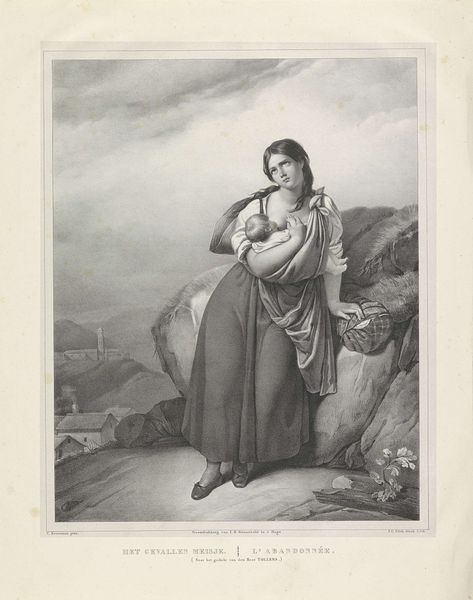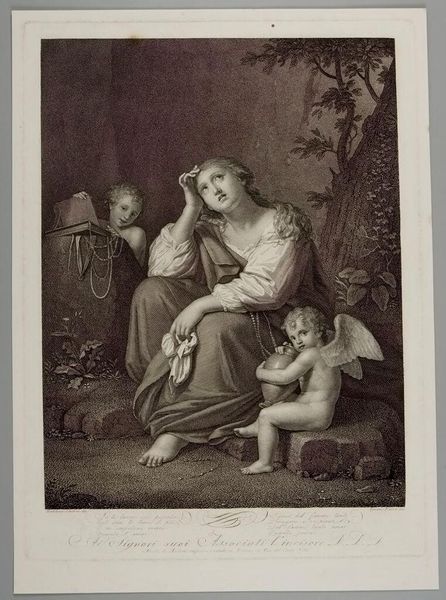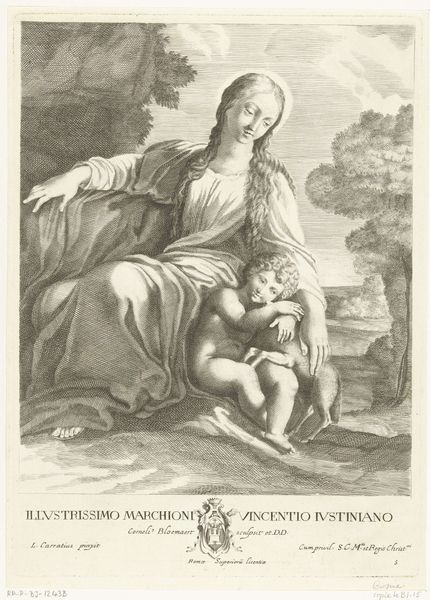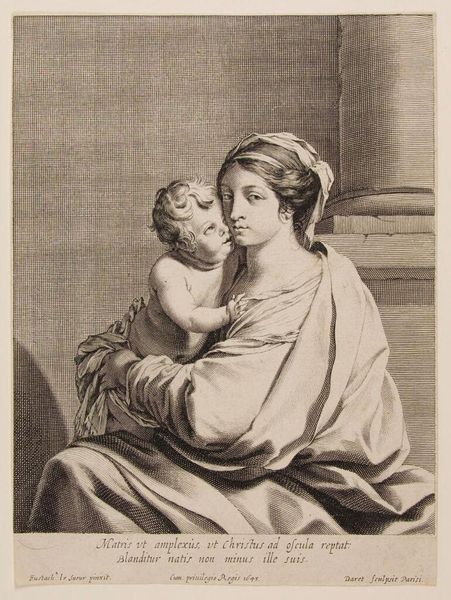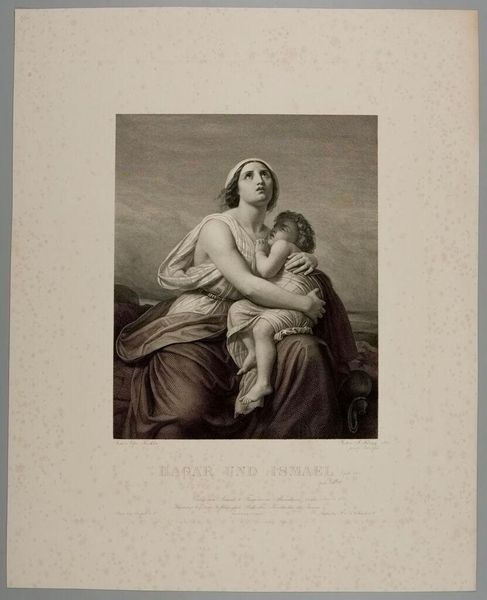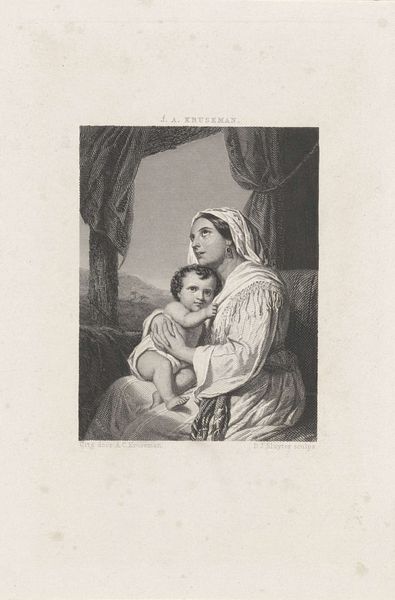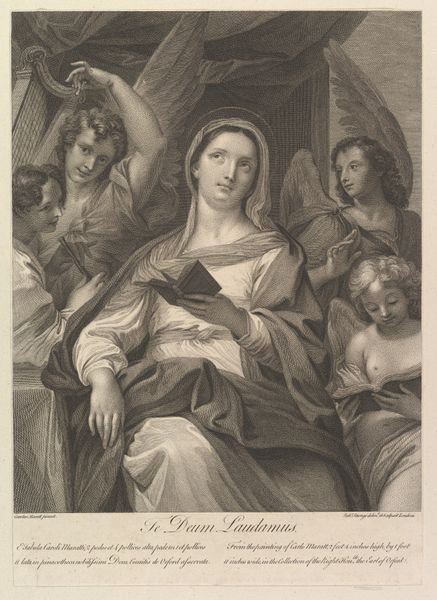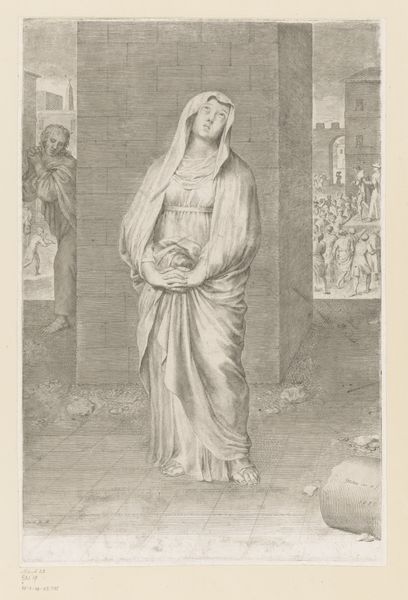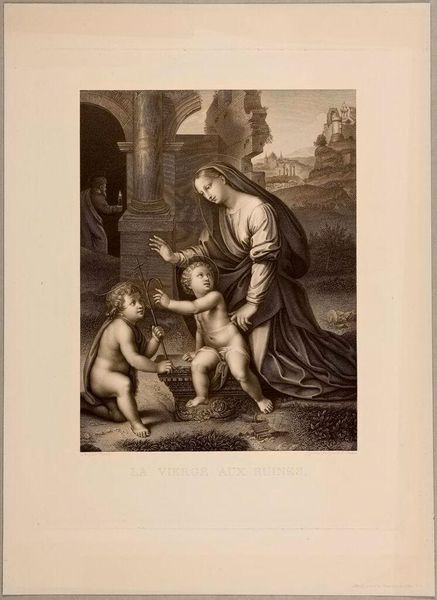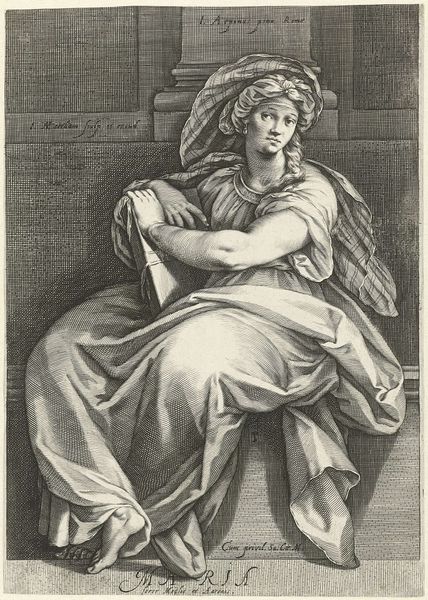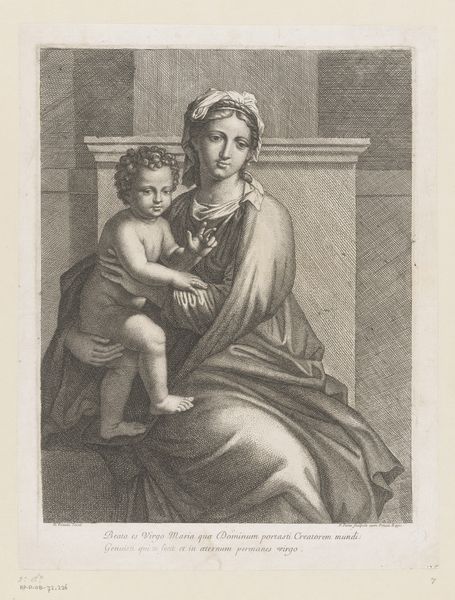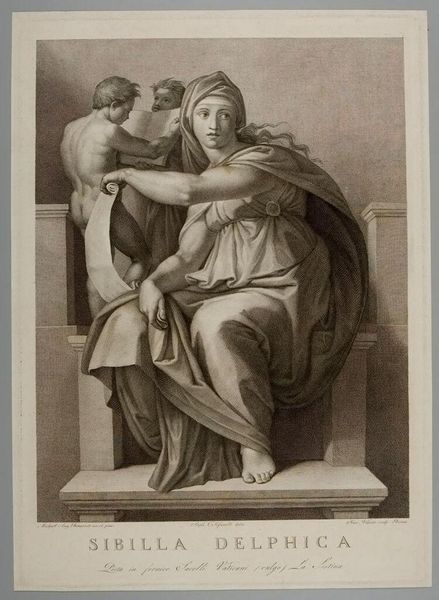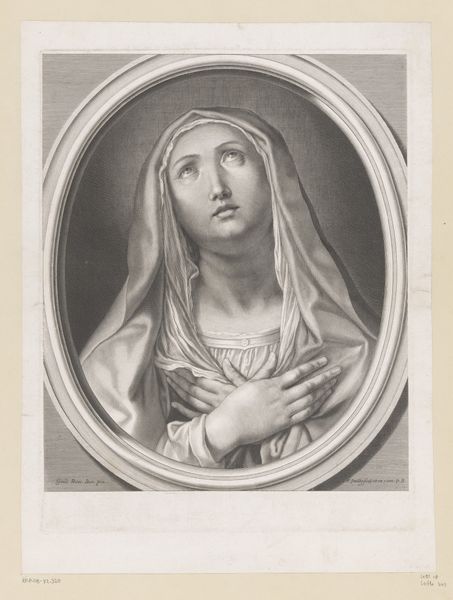
print, engraving
#
portrait
# print
#
landscape
#
charcoal drawing
#
figuration
#
pencil drawing
#
romanticism
#
genre-painting
#
engraving
Dimensions: height 479 mm, width 297 mm
Copyright: Rijks Museum: Open Domain
Curator: The piece before us is entitled "Maria met kind in rotslandschap," or "Mary with child in a rocky landscape." It was created around 1850 by Achille Martinet, an engraving printed here at the Rijksmuseum. Editor: The landscape immediately strikes me. It feels almost desolate, rendered so meticulously in engraving, like a stage set emphasizing Mary’s quiet dignity. Curator: Martinet's print aligns with the 19th-century Romantic tradition, drawing inspiration from both genre painting and traditional religious iconography. Mary is shown as both mother and iconic figure. Her representation begs analysis of her status, or lack thereof, and agency within the context of societal expectations of women during that time. Editor: It is interesting that you point out that her societal role might have informed her depiction. I’m drawn to consider the actual production of this image. Engraving is such a labor-intensive medium, built layer upon layer through repetitive physical action. Who made this? And where did Martinet’s labor fit in the larger studio practice? Curator: Your focus is salient. In Romanticism, the idealized is often presented without acknowledgment of the material realities and human work that allows for its production. What looks effortless on the page conceals immense labor. Consider Mary’s serene expression and posture in contrast to the hard, angular rocks of the landscape—her passivity is part of that same concealing movement, deflecting the turmoil of her position. Editor: I see it now, absolutely! The contrast between her figure and the raw materiality of the engraved rocky landscape becomes an active critique rather than merely aesthetic. Thank you, your focus on the intersections of labor and gender is a wonderful interpretation. Curator: And thank you for revealing the role of material production in reflecting that lived female experience.
Comments
No comments
Be the first to comment and join the conversation on the ultimate creative platform.
